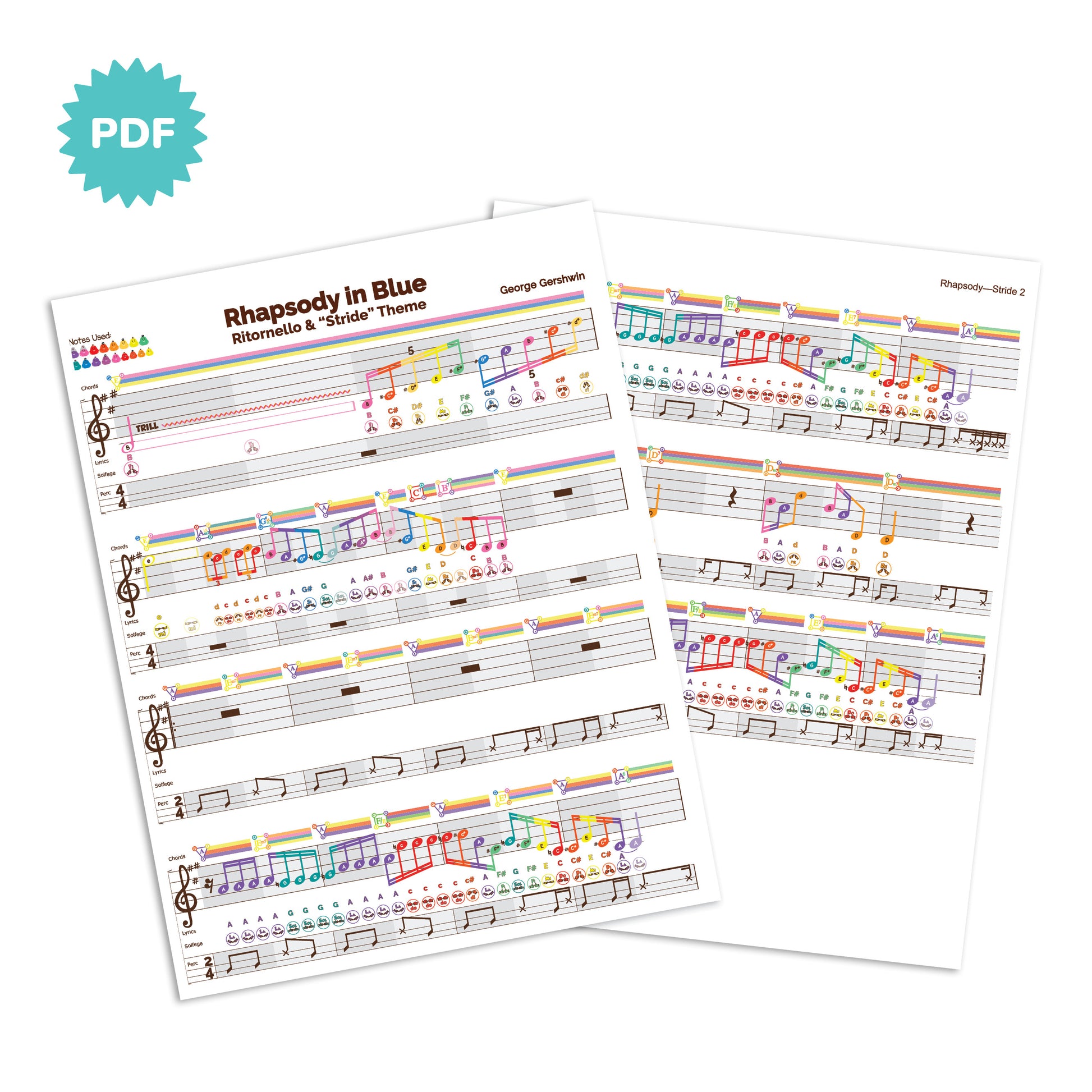*FREE* Rhapsody in Blue—Ritornello & Stride Themes
*FREE* Rhapsody in Blue—Ritornello & Stride Themes
Couldn't load pickup availability
The genres of American music are relatively young when compared to their other worldly counterparts but the compositions of 20th century American composers are wildly unique and have serious clout in the history of music. For Prodigies, there is none more quintessential than George Gershwin and his epic 1924 work of art, “Rhapsody in Blue.”
“Rhapsody in Blue” is beautiful amalgamation of 18th century European orchestrations and African-American blues and jazz music through the lens of son of Ukranian-Jewish immigrants. The word rhapsody in music refers to a single movement work that is comprised of multiple themes but still cohesive, structured but with room for interpretation and ranges in mood, timbre and tonality. Blue refers to the blues scale heavily featured throughout the piece.
The Prodigies approach to understanding this giant was to deconstruct it and analyze the themes individually so that we may make more sense of the parts as a whole. The Ritornello, named for its recurrence, features an opening trill, advanced tuplet rhythms and chromatic 7th chords. The “Stride” Theme, named for the style of piano, features technical 16th note phrases, modal interplay and more chromatic 7th chord harmony. The Ritornello and “Stride” Theme have been transposed to the key of A major for range and include note names and Solfège hand signs.


